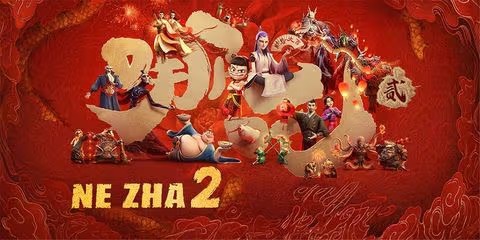 Image Source: BookMyShow
Image Source: BookMyShow
A cinematic milestone is happening as the Chinese animated blockbuster Ne Zha 2 is opening in Indian cinemas, beginning a new chapter in cultural exchange between the two Asian giants. The movie, which has already broken international records with a box office haul of more than $2.1 billion, is not only a visual feast but a reflection of growing close relations between India and China on the 75th anniversary of their diplomatic ties.
Ne Zha 2 is distinctive in its fusion of Indian mythological origins and Chinese narrative. The protagonist, Nezha-a fiery child-god born out of a lotus-takes inspiration from Nalakubara, a character from Hindu and Buddhist mythology, underlining the common cultural heritage of the two nations. This blending of stories provides Indian viewers with a familiar yet new take, appealing to the country's enduring passion for mythological epics and visually ambitious films, as witnessed in such blockbusters as Baahubali, RRR, and Brahmastra.
The film’s arrival in India is more than a box-office event; it is widely viewed as a soft-power milestone. By humanizing and demystifying each other's cultures, movies like Ne Zha 2 foster people-to-people connections that transcend political fluctuations. For Indian viewers, particularly the youth, it’s an opportunity to engage with Chinese culture beyond headlines, nurturing curiosity and mutual respect.
This cultural bridge is not one-sided. Indian movies have also achieved phenomenal success in China. The Tamil action thriller Maharaja became the highest-grossing Indian movie in China after 2018, grossing more than ₹91.55 crore ($10.6 million) and gathering positive word of mouth on Chinese websites. Previously, Bollywood blockbusters Dangal, 3 Idiots, and Secret Superstar had won over Chinese viewers, with Dangal grossing close to $194 million in China alone. The attraction is in the common values-family ties, social struggles, and inspiring stories-that resonate strongly in both cultures.
Industry professionals and academics highlight the possibility of collaborative film production, cultural exchange, and film festivals to further deepen this emerging relationship. As Indian and Chinese filmmakers venture into co-productions and broader distribution, films have the potential to become a strong vehicle for building understanding and cooperation between the two countries.
"Though India and China have profound historical and cultural connections, we don't know each other well enough. To fill this gap, we should concentrate on co-productions of films, cultural exchanges, and market each other's films through festivals and collaborations," opines Hong Yanyan, a Chinese scholar of Indian cinema.
As Ne Zha 2 fills Indian theaters and Indian movies shatter box office records in China, the silver screen is quickly becoming a blockbuster bridge-one that unites two ancient civilizations, one film at a time.
Sources: China Daily, Invest India, M9 NewsBig Picture Film Club
Advertisement
Advertisement





